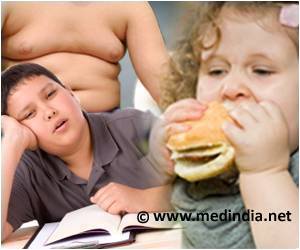In the United States, about 17 percent of children and adolescents aging between 2 to 19 years were found to be obese and may continue into adulthood.

TOP INSIGHT
U.S. Preventive Services Task Force (USPSTF) is an independent panel of experts, who recommend primary care services and preventive medications to clinicians and patients.
Obesity in children and adolescents is associated with mental health and psychological issues, asthma, obstructive sleep apnea, orthopedic problems, and adverse cardiovascular and metabolic outcomes such as high blood pressure, abnormal lipid levels, and insulin resistance.
Children and adolescents also may experience teasing and bullying based on their weight.
Obesity in childhood and adolescence may continue into adulthood and lead to adverse cardiovascular outcomes or other obesity-related issues, such as type 2 diabetes.
To update its 2010 recommendation, the USPSTF reviewed the evidence on screening for obesity in children and adolescents and the benefits and harms of weight management interventions.
Detection
Benefits of Early Detection and Treatment or Intervention
The USPSTF found adequate evidence that screening and intensive behavioral interventions for obesity in children and adolescents 6 years and older can lead to improvements in weight status.
The magnitude of this benefit is moderate. Studies on pharmacotherapy interventions (i.e., metformin and orlistat) showed small amounts of weight loss. The magnitude of this benefit is of uncertain clinical significance, because the evidence regarding the effectiveness of metformin and orlistat is inadequate.
Harms of Early Detection and Treatment or Intervention
The USPSTF found adequate evidence to bound the harms of screening and comprehensive, intensive behavioral interventions for obesity in children and adolescents as small to none, based on the likely minimal harms of using BMI as a screening tool, the absence of reported harms in the evidence on behavioral interventions, and the noninvasive nature of the interventions.
Evidence on the harms associated with metformin is inadequate. Adequate evidence shows that orlistat has moderate harms.
Summary
Comprehensive, intensive behavioral interventions (26 or more contact hours) in children and adolescents 6 years and older who have obesity can result in improvements in weight status for up to 12 months; there is inadequate evidence regarding the effectiveness of less intensive interventions.
The harms of behavioral interventions can be bounded as small to none, and the harms of screening are minimal. Therefore, the USPSTF concluded with moderate certainty that screening for obesity in children and adolescents 6 years and older is of moderate net benefit.
Source-Eurekalert
 MEDINDIA
MEDINDIA




 Email
Email




